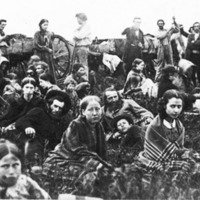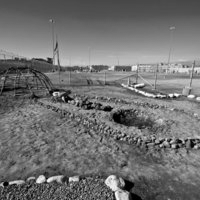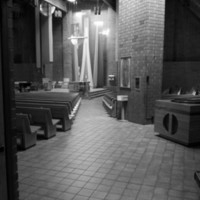Dakota
The Dakota are one of two contemporary peoples indigenous to the lands that became Minnesota, the other being the Anishinaabe (Ojibwe and Chippewa). Mni Sota Makoče is how Dakota people refer to the place where the water reflects the sky. The Dakota are the easternmost peoples of the Oceti Sakowin or Seven Council Fires, and along with the Lakota, comprise the Great Sioux Nation, speaking different dialects of the same language. The four bands of Dakota peoples have homelands in Minnesota: the Sisseton and Wahpeton in western and southwestern Minnesota, and Mdewakanton and Wahpekute in the southeast. The Twin Cities metro area sits on Mdewakanton homelands, including the site where the Minnesota River meets the Mississippi River, which the Mdewakanton consider to be their place of genesis, called Bdote. In 1805, two years after the Louisiana Purchase, Army Lieutenant Zebulon Pike traveled up the Mississippi to secure, through Minnesota's first treaty, a place for a military fort. At Bdote, the Senate approved a $2,000 payment to the Dakota, one percent of Pike's valuation of the land, for 100,000 acres of what would become part of the Twin Cities. Today, both Fort Snelling and Minneapolis-St. Paul International Airport sit on the land.
Dakota spiritual life places great importance on the land and their ways of life have been shaped by their environment for hundreds of years, continuing to the present. The waters of Minnesota, from lakes to rivers to springs, are deeply important to the Dakota as providers of transportation, drinking water, and food, mostly wild rice and fish. Traditionally, the Dakota lived in harmony with natural cycles, moving with the seasons and holding great respect for life. The Dakota were pushed south as the Ojibwe moved into northern Minnesota through the Great Lakes in the late 17th and early 18th centuries, causing conflict but ultimately leading to good relations between the two groups, a peace mediated by a mutual respect for religious and cultural difference and by ceremony, diplomacy, and prayer. The 1825 Treaty of Prairie du Chien set boundaries between Dakota and Ojibwe land.
Beginning in the 1830s, Christian missionaries and white settlers pushing westward interrupted the Dakota and their traditional ways of life, bringing changes that would last for decades upon decades. In a series of treaties in the 1850s, Dakota leaders were compelled to cede their homelands in the southern half of Minnesota in exchange for payments and a ten-mile strip of land along either side of the Minnesota River, essentially ending the traditional nomadic lifestyle that connected Dakota spiritually to their land. However, few of the payments ever came, and faced with confinement to a small territory, failing crops, and broken promises, the Dakota rose up out of desperation in 1862, starting the U.S.-Dakota War. The outcome was a forced winter march, the largest mass execution in American history, and ultimately the expulsion of all Dakota peoples from their homelands and into outlying states, completely severing the connection between land and people. A few were allowed to remain and in the late 19th century, some returned to live on what became four sovereign reservations in Minnesota: Upper Sioux, Lower Sioux, Shakopee-Mdewakanton, and Prairie Island. Between 1883 and 1934, reservation life was governed by administrative laws known as the Civilization Regulations, sometimes called the Religious Crimes Code, under which Dakota and Ojibwe peoples could be jailed and fined for participating in the Sun Dance, funerary give-away feasts, and traditional medicine and healing ceremonies. And forcible English-only boarding school education from the 1870s through the 1930s sought quite effectively to dissolve ties of kinship, land, culture, language, and religion, sowing intergenerational historical trauma that continues to afflict many native peoples in Minnesota today.
In 1968, the American Indian Movement formed in Minneapolis to reconnect Dakota and other native peoples with their language, spirituality, and kin, and leading to legislation in the areas of education, self-determination, religious freedom, and language. Whether citizens of the four Minnesota communities, of communities in outlying states, Canada, or of federally unrecognized Dakota communities, Dakota continue to live in profound relationship to homelands and sacred places both on and beyond reservation boundaries despite centuries of conflict and hardship.
Pipestone

Among the most sacred Native American places in Minnesota are the Pipestone quarries in the southwestern corner of...
Pilot Knob/Oheyawahi

Located in Dakota County, MN, Pilot Knob, or Oheyawahi as it is known by the Dakota, is an easily recognizable region of...
Unpublished Exhibits
Remembering Mankato: 38+2

Dakota Language Revitalization

Exhibit on revitalization of the Dakota language in Minnesota, created November 2015.
Mni Owe Sni / Coldwater Spring

Mni Owe Sni/Coldwater Spring is a spring in Southeast Minneapolis that is sacred to the Dakota .
Native American Religious Freedom at Stillwater Correctional Facility, MN

Listen to Minnesota Religions

